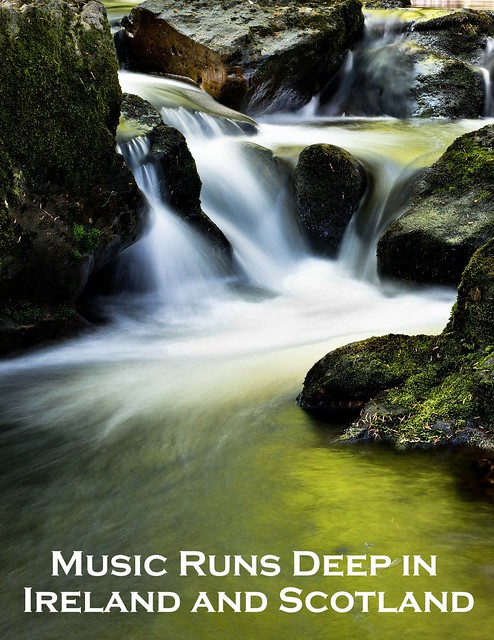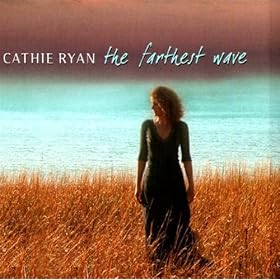Music runs deep in Ireland and Scotland, in the landscape, the history, the legends, the stories, and the lives of the people. Though each is a small country, geographically, they both have sent, and continue to send, mighty amounts of music out into the world. Here are three recordings which offer very different gateways into Ireland and Scotland.

Music intertwined
In English, the word dual suggests a combination or connection of two elements. In Scottish Gaelic and in Irish it means to twine or interlace, and it also refers to one’s heritage. So it makes good sense then that it’s the word Julie Fowlis and Muireann nic Amhlaoibh chose as the title for a recording project that comprises songs in Scottish Gaelic and in Irish. Fowlis is from North Uist in the Western Isles of Scotland. Nic Amhlaoibh is from Dun Chaoin, in the Dingle peninsula in Kerry, about as far west as you can go in Ireland. Each woman grew up speaking both English and Gaelic languages naturally, and learning songs in them from tradition bearers near their homes. “When I’m doing a song, I don’t think of what language the song is in, I just think of the story,” Nic Amhlaoibh says. When they first crossed paths at a festival, the two thought they didn’t have any songs in common. As they started exploring they found that, in fact, there were many connections that delighted and intrigued them. In the midst of full schedules, they began booking short runs of gigs, with Fowlis’ husband Eamon Doorley, who plays bouzouki, and Scottish guitarist Ross Martin. Audiences kept requesting a recording, and so “we finally put our skates on and got it done!” Fowlis says.
On the recording, Dual, the original four are joined just by Fowlis’ sister Michelle on backing vocals and Nic Amhlaoibh’s husband, Billy Mag Fhloinn, on bodhran. They offer songs of the sea and life at water’s edge, tales of family, songs of history and legend, songs of love and daily life. Even if you speak not a word of Scottish Gaelic or Irish, the emotions and the stories come clear, and you’ll hear familiar melodies now and again too. “Scottish Gaelic is a very ancient language,” Fowlis points out. “Some of these songs go back centuries. But they are about real places and real emotions, and it’s what I know and love.” The singers offer comments about the stories of the songs in the liner notes, too, in English as well as the Gaelic languages.
Scotland through song
As musicians, Emily Smith and Jamie McClennan have taken their work across the world,. Much of the music they take with them, and love the best, is source close to home, which for them is in Dumfriesshire in southwestern Scotland. They live not far from several of the places where the national bard of Scotland, Robert Burns, lived and worked in the 1700s. So as they were thinking of an project to do together and as Scotland was marking a year of homecoming, the idea of doing Burns album evolved.
“I wanted it to be a different Burns album, though,” Smith says. ”There are so many of them out there coming not only from Scotland, but all over the world.”
They began their search for material with songs Burns wrote with connections to Dumfries and Galloway, added in a few of his lesser known songs, “and then there are several on there just because they are ones I’ve always wanted to learn or we just really enjoy playing!” Smith says. The result is as they wished, a different Burns album -- straightforward and unsentimental, Smith’s singing and McClennan’s playing serve both Burns’ sense of fun and his sense of landscape, his appreciation for mankind and for womankind, as well. From the haunting soldier's farewell in Silver Tassie to the dancing farmer in The Plooman, Adoon Winding Nith is a lively and loving journey that makes a fine companion to exploration of any part of Scotland.
Ireland of legend and landscape
Legend, landscape, faith, history, and current day connections of Ireland all come in to play on Cathie’s Ryan’s album The Farthest Wave. The Wild Flowers, by John Spillane, talks of flourishing outside expected paths, “and when I heard John sing it, one night at a club in Dundalk, I knew that was a song I’d been looking for, the song I’d build the album around,“ Ryan says. The title track, a song which Ryan wrote, maps the possibility of a journey from grief to healing framed in the natural world and in ancient myth. Gabhaim Molta Brighde, with just Ryan’s voice and a quietly understated accompaniment from Phil Cunningham on accordion, is a hymn to Ireland's other saint, lesser known than Patrick outside Ireland, but a woman with a powerful story and a presence which speaks across history. What Will you Do Love? a duet with Sean Keane, reflects on the challenge and depths of love. Dance the Baby, which Ryan sings in Irish, is the sort of song her grandfather used to dance Ryan around the kitchen when she was tiny. What’s Closest to the Heart is another song Ryan wrote. In it, she offers is a very different sort of dance, an enigmatic landscape of emotion that reassures even while it questions and invites, with swirling guitar from John Doyle, blazing fiddle from John McCusker, and lyrics from Ryan in both English and Irish.
Travel with these artists to Scotland and Ireland. Step through the doors they open with their music. You’ll never see either country quite the same way again.
Kerry Dexter is the Music Editor for Wandering Educators.
Kerry's credits include VH1, CMT, the folk music magazine Dirty Linen, Strings, and The Encyclopedia of Ireland and the Americas. She also writes about the arts and creative practice at http://www.musicroad.blogspot.com Music Road. You may reach her at music at wanderingeducators dot com



